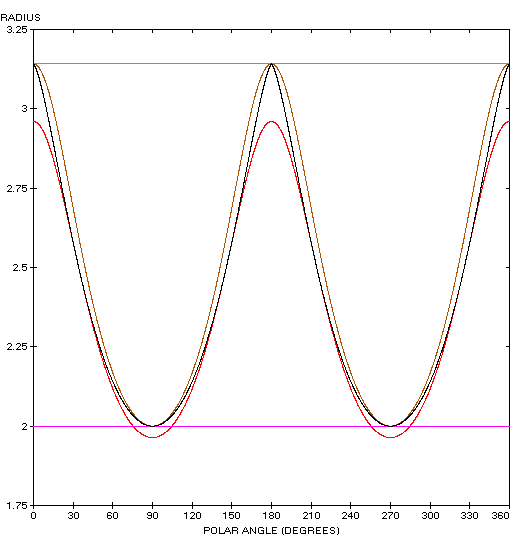Balmoral Software

Balmoral Software

Since y(π - t) = y(t) and the path of the lower arch is a point reflection through the origin of the upper arch, S is bisymmetric. Its abscissa extrema are (±π,0) and its ordinate extrema (0,±2), so the width x height of its bounding rectangle is 2π x 4. Its perimeter is double that of one cycloid arch:
x(t)y(t) = [-2t + π + sin(2t)][1 - cos(2t)]This expression is maximized at
t* = 0.984995,so the inellipse dimensions are
For verification, we have
Figure Parameters Perimeter Area Centroid Incircle R = 2 12.566371 12.566371 Inellipse a = 2.959917
b = 1.96388415.627233 18.261870 Cycloid arches Width: 2π
Height: 416 18.849556 Circumellipse a = π
b = 216.352486 19.739211 Circumcircle R = π 19.739209 31.006277


The cycloid (red) is a member of a group of similarly-shaped figures described on these pages, including (inside to outside) the mouth curve and the Vesica Piscis:
Copyright © 2021 Balmoral Software (http://www.balmoralsoftware.com). All rights reserved.